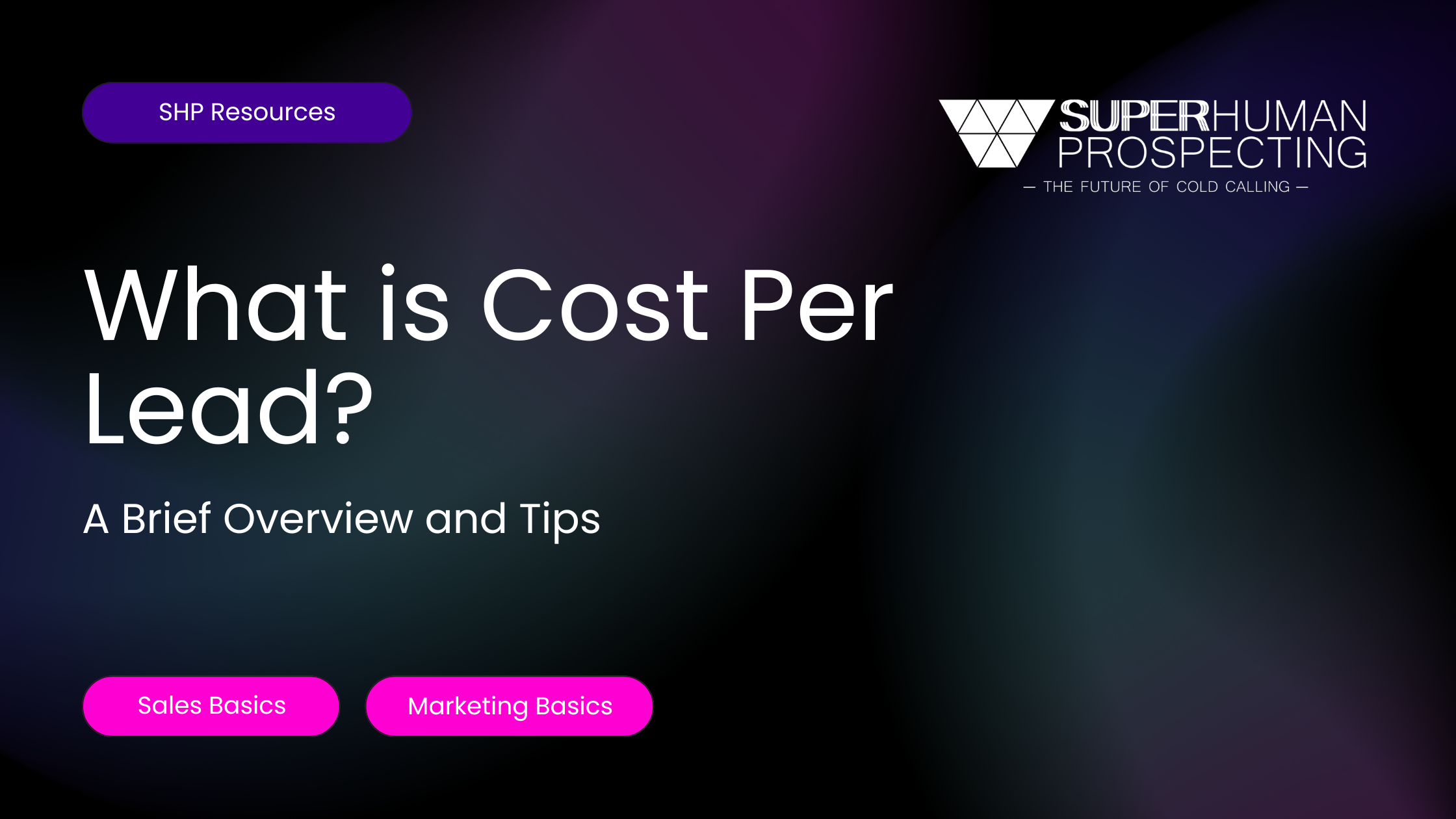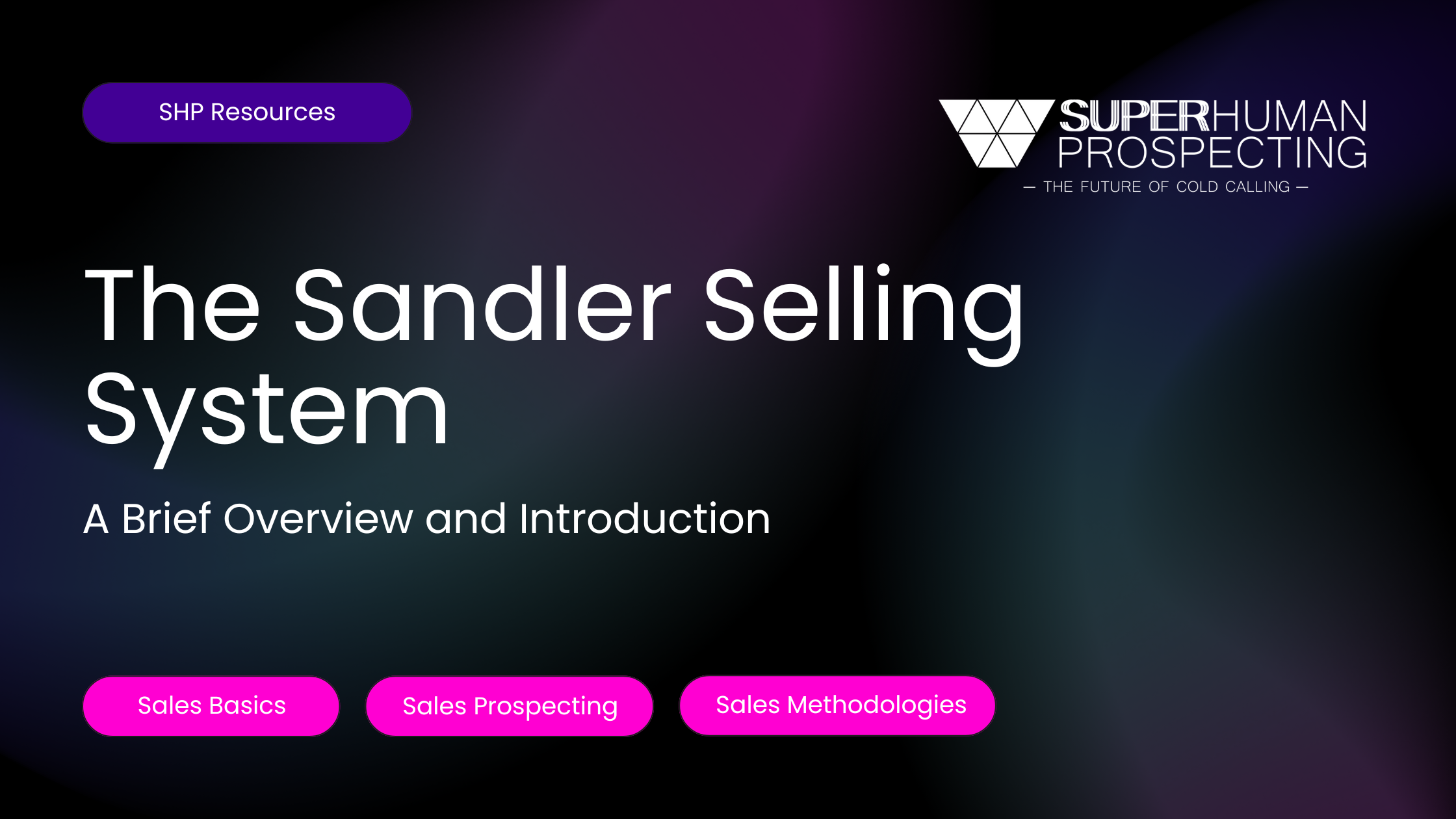Chances are, if you’re running B2B outreach campaigns, you’re always looking for ways to make your campaigns even better. Maybe you’ve already implemented “best practices” and are now looking for something more.
Fortunately, we’re in the business of B2B prospecting – at scale – and have helped countless businesses maximize the effectiveness of their campaigns.
Now, we’re happy to share our winning strategies for getting more high-quality leads with less time and less effort!
The Art (and Science) of B2B Prospecting
Effective B2B prospecting is both an art and a science. The “art” lies in an organization’s ability to personalize their campaigns and implement creative strategies. The “science” involves leveraging data and technology to optimize the performance of your campaigns.
This balance must be understood in order to create prospecting campaigns that are both targeted to your audience’s interests and configured to drive returns on your time and resources.
Keep this philosophy in mind when creating, optimizing, and managing your B2B prospecting campaigns.
It’s all about building relationships.
You could have the fanciest tools and strategies in the world, but you’ll still find that your best clients are earned through relationships. Building rapport – and even, finding common ground – with prospects will lead to better response rates, close rates, and retention.
One way to nurture relationships is by leveraging referrals. Use your network to gain introductions to decision makers in your space. Do your research about the prospect in order to start a meaningful conversation.
The effectiveness of relationship-building is well-recorded; B2B companies with referrals report a 69% faster close time on sales!
Personalization meets performance.
You’ll receive more responses and calls booked when you personalize your campaigns. This doesn’t have to be anything fancy. You can reference something you saw on their LinkedIn page, a new product launch by their company, their brand in the news, etc. to show that you pay attention to what they are doing in their space.
You can also segment your audience based on title, demographics, interests, etc. and then craft personalized messages that appeal to their needs. This demonstrates a perfect blend between the “art” of personalization and the “science” of performance optimization.
Harness data (and your intuition).
The best sales reps have killer instincts when it comes to sensing the needs (and potential objections) of a prospect. They are able to quickly tailor their pitch to address any challenges, questions, or concerns as they arise.
Effective B2B prospecting also demands an attention to the data. What behavior patterns can be observed? Where do prospects often drop out of the funnel? What are the most common objections? Successful sales reps look to this information to drive and adapt their approach.
Tip 1: Take a crash course in Search Intent
“Search intent” is a common concept in the world of Search Engine Optimization (SEO) but also has its application to B2B prospecting. In a few words, “search intent” refers to the underlying goal a user has when researching or showing interest in a product or service. This is valuable information to have when crafting targeted outreach campaigns.
Sales teams can utilize intent data to identify prospects who are actively researching products or services similar to what your brand offers. This data can be gathered from various sources, such as third-party tools like Semrush, or first-party sources such as your website keywords or content downloads.
You can usually integrate this intent data into your CRM in order to “trigger” campaigns based on search intent. For example, if someone downloads a pricing guide for your product, their “intent” is likely to compare prices, so they may be interested in case studies or customer testimonials that move them closer to purchase.
Sales teams can also segment leads based on intent signals and then prioritize those showing the highest level of interest. Use a scoring model to assign higher scores to behaviors indicative of buying intent (again, like downloading a pricing guide or searching for discount codes).
Tip 2: Implement “multi-touch” prospecting campaigns
It’s easy to rely on automated email cadences to run your prospecting campaigns. But emails get buried, and a busy prospect might not be checking their inbox. For the right segment, implementing a “multi-touch” campaign might be the way to improve response rates.
A multi-touch campaign is one that combines several outreach methods to engage prospecting across various channels. This may include email, phone calls, text messages, social media messages, direct mail, or some combination of the above. Whatever you choose should consider the communication preferences of your target audience.
Here’s an example of what a multi-touch campaign might look like:
- Initial email: You send an initial email outreach introducing yourself and your brand, and prompting the prospect to book a call
- Social media message: Three days after the initial email, if you haven’t heard back, you send a LinkedIn message mentioning your previous email, and ask whether they are interested in booking a call
- SMS: After they’ve booked an appointment and you’ve completed the call, you send them a text thanking them for their time and say you will follow up with next steps
- Targeted content: Completion of their appointment triggers the delivery of an automated email containing links to a relevant case study and a product demo
Sounds complicated? A multi-touch prospecting campaign doesn’t have to be manual. You can often use sales engagement tools – like Klenty – to sequence and personalize touches across several platforms. You can also review performance data after the fact to further refine your campaigns based on engagement.
Tip 3: Subscribe to social listening tools
Take much of the work out of manual prospecting by utilizing social listening tools. There are so many tools available that allow you to set alerts based on certain brands, keywords, trends, and more.
For example, Hootsuite is a popular social listening tool that allows you to track and analyze social media conversations related to certain topics. It offers a wealth of data to help you better understand your audience, track trends, and identify industry thought leaders, brands, and influencers.
Also, while not explicitly a social listening tool, Google Trends allows users to set up alerts on certain keywords. So, if you run an Online Reputation Management (ORM) firm, you could set alerts for “CEO controversy” or “bad publicity” to be alerted to news stories that might pertain to individuals needing reputation management services.
Tip 4: Post “organic” thought leadership content
Many brands make the mistake of publishing exclusively under their company profiles, which is less effective at capitalizing on “organic” relationships. If your company allows it – and your sales reps are for it – posting from individual profiles could be a great way to attract more quality leads.
In essence, sales reps establish themselves as individual thought leaders by posting engaging and valuable content. So, if your company offers corporate travel booking services, a sales rep may independently post tips on how to make travel more convenient and comfortable for employees, the benefits of encouraging employee travel, the best corporate events to check out this year, etc.
Posting these “organic” (i.e. not under the brand name) discussions is a great way to build trust, generate more online connections, and drive leads via individual profiles. Also, the content appears less self-serving than it would being posted from a company page. Sales reps can then use the respective platform tools (like LinkedIn’ Sales Navigator) to follow up with commenters and connections.
Tip 5: Classify prospects with scoring
Many CRM tools have built-in lead scoring tools to help sales professionals prioritize the most viable prospects. But these ratings are often generic and not specific enough to an organization’s actual sales funnel. That’s why it’s important to establish your own classification system based on what you know about your audience.
Effective lead scoring involves a combination of demographic information, behavioral data, and engagement metrics.
First, identify the key characteristics of your ideal customers and use this information to craft detailed buyer personas. Then, determine which behaviors (within each persona) might indicate that a lead is moving closer to making a purchase. If a sales rep identifies that a particular behavior is present, the lead is then scored accordingly and then prioritized based on where they are at in the sales funnel.
Finally, assign points to each behavior based on their importance and correlation to conversion. For example, a prospect that has booked a demo shows a stronger intent to purchase than someone who has subscribed to your newsletter, and should receive a higher rating.
This scoring system should not remain static. Your organization should regularly update your lead scoring criteria based on the performance data and direct feedback from prospects and your sales professionals.
Tip 6: Won or lost, ask for referrals
Whether a deal is won or lost, it’s always worth it to ask for a referral (unless the prospect tells you to take a hike, of course). Many people are willing to make quick introductions, or keep your business in mind, even if they don’t become a customer.
Here’s an example of an email a sales professional could send to kindly request referrals in the future:
“Hi [ prospect name ],
Thanks again for your time to discuss [ product ]. Even though it may not be the right time for us to work together, I’d love for you to keep us in mind for future business opportunities. If you happen across anyone in your network who needs [ service ], we would welcome the introduction and referral. Simply direct them to email me at [ email address ] and tell me you send them!”
You can also leverage these network connections to generate referrals via social media. For example, if there is a lead you would like to connect with, and you see that a previous prospect is a mutual contact, you can kindly ask them to make an introduction. A message like, “Hey! I know we didn’t get the chance to work together, but I see that you are connected with [ name ]. Do you know them well enough to make a quick introduction?”
A lost deal doesn’t mean the door closes on new business. Take advantage of that connection to generate more referrals for potentially years to come!
Take the Guesswork Out of B2B Prospecting
Even with all these expert strategies in your arsenal, B2B prospecting can still be time consuming, tedious, and expensive. It can take months for sales representatives to get fully on board (especially following massive changes to your processes) and paying that overhead can be substantial in the meantime. That’s why outsourcing can be a significant cost- and time-saving solution!
At Superhuman Prospecting, we have B2B prospecting down pat. With our refined and effective system, we empower brands to reach more quality prospects in less time, and with less financial investment. If you’re ready to see a greater return on your prospecting efforts, contact us to learn more about our prospecting and lead generation services.







